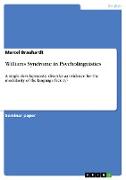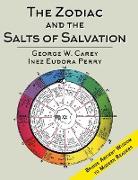- Start
- Williams Syndrome in Psycholinguistics
Williams Syndrome in Psycholinguistics
Angebote / Angebote:
Seminar paper from the year 2010 in the subject English Language and Literature Studies - Linguistics, grade: 1, 7, Humboldt-University of Berlin (Anglistik/ Amerikanistik), course: Syntactic Competence, Structures and Processes, language: English, abstract: Background:
In their study, Clahsen and Almazan (2001) tried to show that the analysis of Williams syndrome from a linguistic perspective might lead to evidence for the modular structure of the human language faculty, a widespread assumption yet, but without accepted evidence. Karmiloff-Smith amongst others, argues by contrast that disorders, such as Williams syndrome, are too complex to allow such general deduction as presented by Clahsen and Almazan.
Method:
First, the study by Clahsen and Almazan is going to be introduced. Then, more recent and challenging argumentation from different sources will be discussed in terms of plausibility of the conclusion drawn by the authors of the study.
Result:
The explanation offered by Clahsen and Almazan is clearly nondevelopmental and therefore discounts vital aspects of language acquisition, especially for people with disorders. Thus, their core argument turns out to be hardly tenable.
Conclusion:
Evaluation of the contrasting argumentation shows that neither Williams syndrome nor other disorders such as Specific language impairment alone can serve as ultimate proof for modularity of the human language faculty. Disorders rather point to crucial developmental delays and disadvantages in the process of language acquisition and therefore cannot be evidence for the dual structure of the language faculty. Even within single domains, fractionation occurs at such a complex level that any explanation must consider the aspect of development.
Folgt in ca. 10 Arbeitstagen




